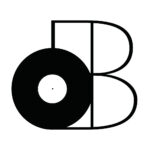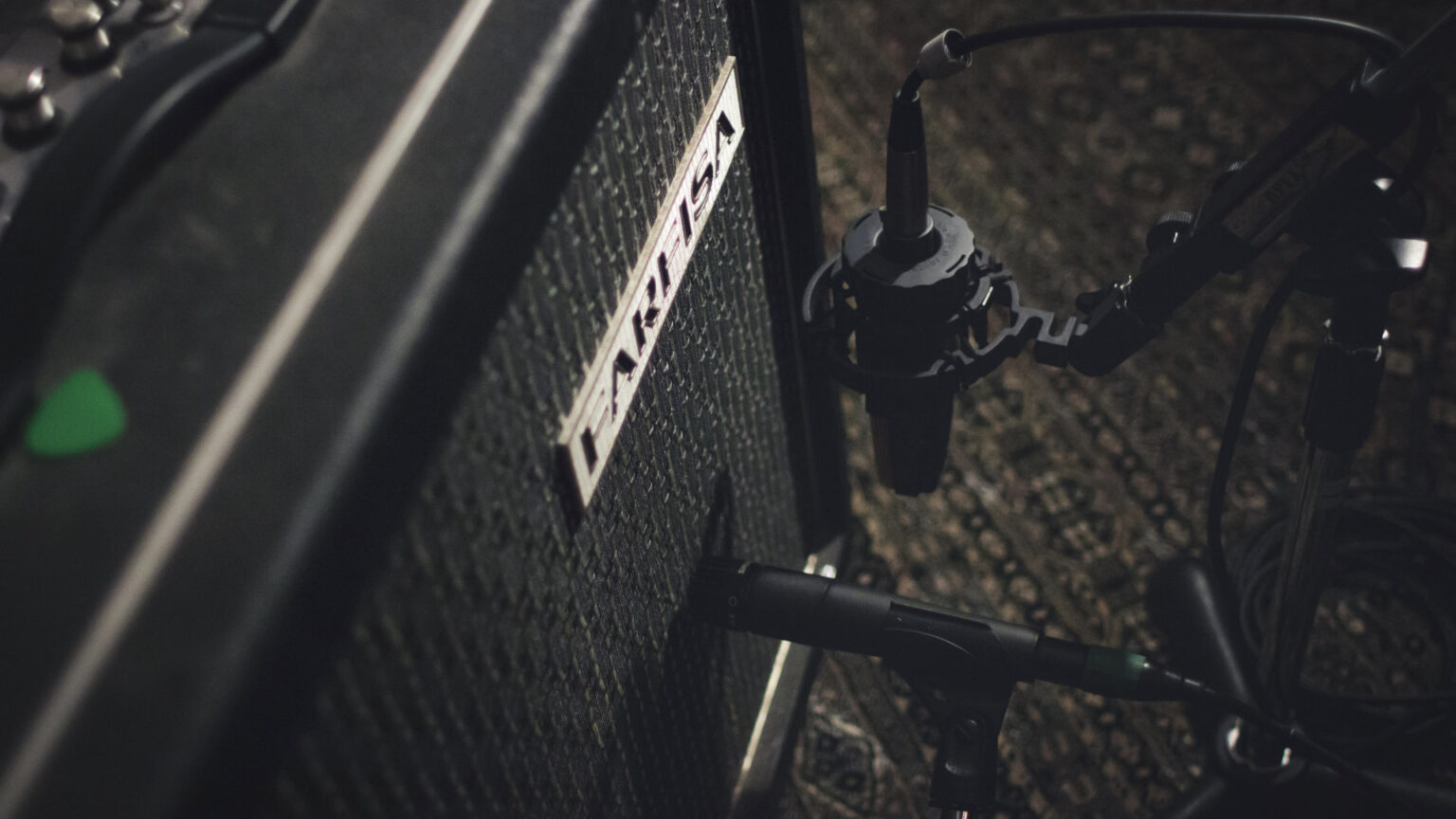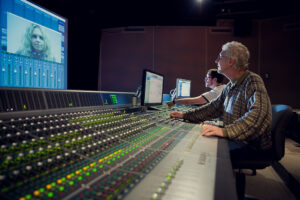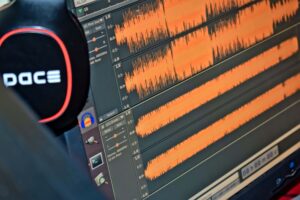If you want to get great-sounding electric guitar recordings at home (WITHOUT using amp modelling software), then you’ll need the right microphone for the job.
That’s why we’re looking at 6 of the best microphones for recording electric guitar at home.
I’m going to assume that you’ve already got yourself a great amplifier to work with! However, even the best guitar amp will sound terrible if it’s paired with the wrong microphone.
BUT rest assured, I’ll be providing you with all the guidance you need to make an informed decision.
The first thing we’re going to start with is determining which TYPE of microphone you’ll be using to record electric guitar (hint: it’ll depend on the type of mix you’re going for).
Once we get an understanding of that, we’ll move on to my personal selection!
Let’s get started…
- What type of microphone is best for recording electric guitar?
- 1. AKG Perception P5 S Supercardioid Dynamic Microphone
- 2. Sennheiser e 906 Supercardioid Dynamic Microphone
- 3. Shure SM58 Cardioid Dynamic Microphone
- 4. Shure SM57 Cardioid Dynamic Microphone
- 5. Avantone Pro CR-14 Dual-Ribbbon Microphone
- 6. Aston Microphones Spirit Large-Diaphragm Condenser Microphone
- Summary: 6 Best Microphones for Recording Electric Guitar at Home
What type of microphone is best for recording electric guitar?
If you’re not already familiar with the different types of microphones, there are basically 3 types that we work with when it comes to recording electric guitar…
- Dynamic (Moving-Coil)
- Ribbon
- Condenser
Generally speaking, you’re going to get better frequency response and dynamic range with ribbon and condenser microphones.
Dynamic (moving-coil) microphones have their limitations, but also have advantages.
That’s especially true if your recording space isn’t treated and/or you’re dealing with excessive amounts of ambient noise.
However, dynamic microphones have another important advantage when it comes to mixing! Electric guitars may not sound at their best when recorded with dynamic microphones, BUT…
That’s only true when you isolate them.
In the context of a mix, it’ll actually sound better if your electric guitars were tracked using a dynamic microphone. In other words, they’ll sit better in the mix.
So, why would you even consider using a ribbon and/or condenser microphone if that were the case?
Basically, it depends on how densely populated your mix will be.
If you’re recording rock/metal music, then you’d definitely need to remove a lot of excess frequencies and dynamic range if you WEREN’T using a dynamic microphone (ironic, I know).
When it comes to electric guitar in a solo context or even in lighter mixes (like in jazz or even blues), you might not get the sound you’re looking for unless you used a ribbon/condenser microphone.
I hope that makes sense, but don’t worry. I’ll be making more references as we go along.
For the most part, save the expensive microphones for the right occasion!
It won’t benefit you to have more resolution if you can’t even hear it (or use it) in the mix!
1. AKG Perception P5 S Supercardioid Dynamic Microphone
The AKG Perception P5 S has got to be my favourite dynamic microphone (more about why HERE).
You’ve probably never heard of it and would’ve have most likely NEVER heard of it if you hadn’t stumbled on this article. It’s definitely one of the most underrated microphones on the market.
It seems like AKG has marketed the P5 S mainly for live vocals, but it sounds AMAZING on electric guitar!
You’ll also notice that it’s one of the few dynamic microphones with an extended frequency response…
- Frequency Response: 40 Hz – 20,000 Hz
- Polar Pattern: Supercardioid
- Output Impedance: 580 Ohms
Believe it or not, the AKG Perception P5 S is also the most affordable microphone for recording electric guitar. I personally think it’s also the best dynamic microphone for electric guitar amps… PERIOD!!
It’s got a great signal-to-noise ratio and suppresses ambient noise like nothing else I’ve ever heard.
In other words, if you haven’t got the best recording space or even need to record outdoors, you’ll still get amazing results with the P5 S.
You can attribute that to the supercardioid polar pattern.
It’s much more directional and is why I prefer the P5 S over the Shure SM57/SM58.
And once again, the fact that the P5 S can go up to 20,000 Hz is probably the main reason you should consider it over any other dynamic microphone on this list.
The sound? I’ll leave that up to your ears to decide!
2. Sennheiser e 906 Supercardioid Dynamic Microphone
It’s almost too easy to confuse the Sennheiser e 906 with the e 609!
These two microphones might look the same, but they most certainly DON’T sound the same. Yes, the e 906 is more expensive, but you’ll be much better off.
Just like the Shure SM57 (which we’ll talk about later), it too has achieved “legendary” status.
The Sennheiser e 906 is definitely one of the best dynamic microphones for recording electric guitar and that’s partly because of the size of the microphone capsule.
It’s also got some other perks that you’ll definitely be taking advantage of…
- Frequency Response: 40 Hz – 18,000 Hz
- Polar Pattern: Supercardioid
- Output Impedance: 350 Ohms
I want you to keep an eye on the frequency response and the output impedance. You’ll see later on why you might be better off with the e 906 if you need more versatility.
And just like the AKG Perception P5 S, this one’s got a supercardioid polar pattern!
However, the only reason I’d go with the e 906 over the P5 S would be because of the larger microphone capsule. It is designed to capture more surface area.
The AKG P5 S and Shure SM57/SM58 are much smaller and more focused.
That being said, you’ll get a bigger sound with the Sennheiser e 906. It’s the perfect contrast to any of the other dynamic microphones on this list.
3. Shure SM58 Cardioid Dynamic Microphone
WAIT A MINUTE… The Shure SM58 is designed for vocals, isn’t it?
Well, I’m actually recommending it before the Shure SM57 (which is the industry-standard for recording guitar BTW) because I personally find it sounds better.
Technically speaking though, the Shure SM57/SM58 are the same microphone.
The only real difference is the fact that the SM58 has a different microphone capsule…
- Frequency Response: 50 Hz – 15,000 Hz
- Polar Pattern: Cardioid
- Output Impedance: 150 Ohms
You’ll see in the next section that the specs are identical to the SM57.
So, why do I personally think the Shure SM58 sounds better for recording electric electric guitar? The one’s I’ve worked with actually have more presence in the midrange.
In other words, the Shure SM57 has more of a “scooped” sound (better for rock/metal music).
However, I recently found out that one SM58 might not sound identical to the next…
Does that mean it doesn’t really make a difference whether you get an SM57 or SM58? I still think that the microphone capsule has an impact on the sound, regardless of that phenomenon.
Want to make sure you’re getting what you want?
Order (or try) one of each and return the one that you don’t like as much!
4. Shure SM57 Cardioid Dynamic Microphone
If you’ve ever recorded in a commercial recording studio, chances are the engineer doesn’t even think twice about using a Shure SM57 on your guitar cabinet.
It’s definitely achieved “legendary” status, but your engineer may want to think again!
I’m not saying it’s not a good microphone (it made this list, didn’t it?), I’m just saying that there are plenty of other options worth considering. The SM57 shouldn’t be your “default” choice.
Remember, it might be NEARLY identical to the Shure SM58, but it isn’t…
- Frequency Response: 40 Hz – 15,000 Hz
- Polar Pattern: Cardioid
- Output Impedance: 150 Ohms
I will say that the Shure SM57 sounds best for rock/metal music. It places you electric guitars perfectly in the mix right out of the box!
If you’re going for that “scooped” sound, it’s definitely the right microphone.
If you’ve got TWO guitarists, you can actually mic one up with an SM57 and the other with an SM58 just to get that little bit of separation in the mix.
Pretty good tip, eh?
It’s definitely worth having one of each, just make sure that both of them do in fact sound different.
As I said in the previous section, I can’t guarantee anything knowing that one SM57 might sound different from another. Might have something to do with the year it was produced in!
5. Avantone Pro CR-14 Dual-Ribbon Microphone
I promised you a ribbon microphone and here it is… The Avantone CR-14!!
It’s another one of those microphones you most likely would’ve passed up if you hadn’t landed on this page. It’s also one of the most affordable (yet impressive) ribbon microphones out there.
Is that the only reason I’m recommending it for recording electric guitar?
Well, I definitely don’t want you going out there buying a 1000$+ ribbon microphone only to find out your recording space doesn’t do it justice.
However, I’m 100% serious when I say I’d choose the CR-14 over any “legendary” ribbon microphone…
- Frequency Response: 30 Hz – 16,000 Hz
- Polar Patter: Bi-Directional (Figure-of-Eight)
- Output Impedance: 600 Ohms
That’s partly because it’s one of the few rugged ribbon microphones out there.
As you may know, most ribbon microphones (especially the vintage models) are EXTREMELY FRAGILE.
If you’re recording electric guitar at home, you never know… One of your guests might accidently breathe on it and ruin the ribbon element (that’s actually what would happen, no jokes).
Speaking of ribbon elements…
One of the main reasons I prefer the Avantone CR-14 over other ribbon microphones is because of the dual-ribbon element. It makes the microphone more sensitive and dynamic!
In regards to sound, it sounds like the perfect blend of vintage and modern!
Just remember to pair it with a good inline microphone preamp to get the most out of it (more info on inline microphone preamps in THIS article).
6. Aston Microphones Spirit Large-Diaphragm Condenser Microphone
It’s been refered to as a “classic in the making” and I couldn’t agree more!
If you’re looking for one of the most versatile microphones for recording electric guitar, the Aston Spirit will definitely keep you experimenting for years to come.
That’s primarly due to its multi-pattern design.
You’ll be able to select between cardioid, bi-directional (figure-of-eight) and omnidirectional. This is what makes the spirit the perfect all-in-one microphone for home recording.
It’s also one of the best condenser microphones for recording electric guitar…
- Frequency Response: 20 Hz – 20,000 Hz
- Polar Pattern: Cardioid/Bi-Directional/Omnidirectional
- Output Impedance: 200 Ohms
You’ll get the optimal dynamic range and frequency response with the Spirit!
You’ll also get much more brilliance in the top-end compared to the darker sound of the Avantone CR-14. It’s basically a decision of bright/dark when it comes to condenser/ribbon microphones.
That being said, the Aston Spirit will sound much better on clean electric guitar tracks.
I personally wouldn’t recommend it for heavily distorted guitars. That’s when you’d be better off recording electric guitar with a dynamic microphone.
When it comes to ruggedness though, I guess you can say the Spirit is built like a tank!
It’ll definitely be safer than the CR-14 in your home recording studio.
Summary: 6 Best Microphones for Recording Electric Guitar at Home
Here’s a table if you want to compare all the microphones we looked at side-by-side…
| AKG Perception P5 S | Sennheiser e 906 | Shure SM58 | Shure SM57 | Avantone Pro CR-14 | Aston Microphones Spirit | |
| Frequency Response | 40-20,000 Hz | 40-18,000 Hz | 50-15,000 Hz | 40-15,000 Hz | 30-16,000 Hz | 20-20,000 Hz |
| Polar Pattern | Supercardioid | Supercardioid | Cardioid | Cardioid | Bi-Directional | Multi-Pattern |
| Output Impedance | 580 Ohms | 350 Ohms | 150 Ohms | 150 Ohms | 600 Ohms | 200 Ohms |
If you ask me, you can’t go wrong with the AKG Perception P5 S.
It’s one of my most-used microphones and I use it on much more than just electric guitars.
The Shure SM57/SM58 is a classic and has a distinct sound, but I’d only use them if you wanted to create contrast between multiple guitar tracks.
Remember, the SM57/SM58 doesn’t have an extended frequency response like the P5 S so it won’t be as versatile if you’re looking for an all-in-one solution.
If you’re ready to spend a little more though, I’d definitely consider the Sennheiser e 906.
I’m telling you, the larger microphone capsule will give your guitar tracks much more headroom!
When it comes to ribbon vs condenser microphones… It’s a matter of personal taste, but I would personally go with the Aston Spirit.
It’ll be much more versatile and durable in the long run!
So, which microphone do you think is best for recording electric guitar?
Let us know in the comments and feel free to ask any questions!
Sources
https://www.akg.com/Microphones/microphone-sale/P5S.html
https://en-ca.sennheiser.com/e-906
https://www.shure.com/en-US/products/microphones/sm57
https://www.shure.com/en-US/products/microphones/sm58
http://www.avantonepro.com/cr-14.php













